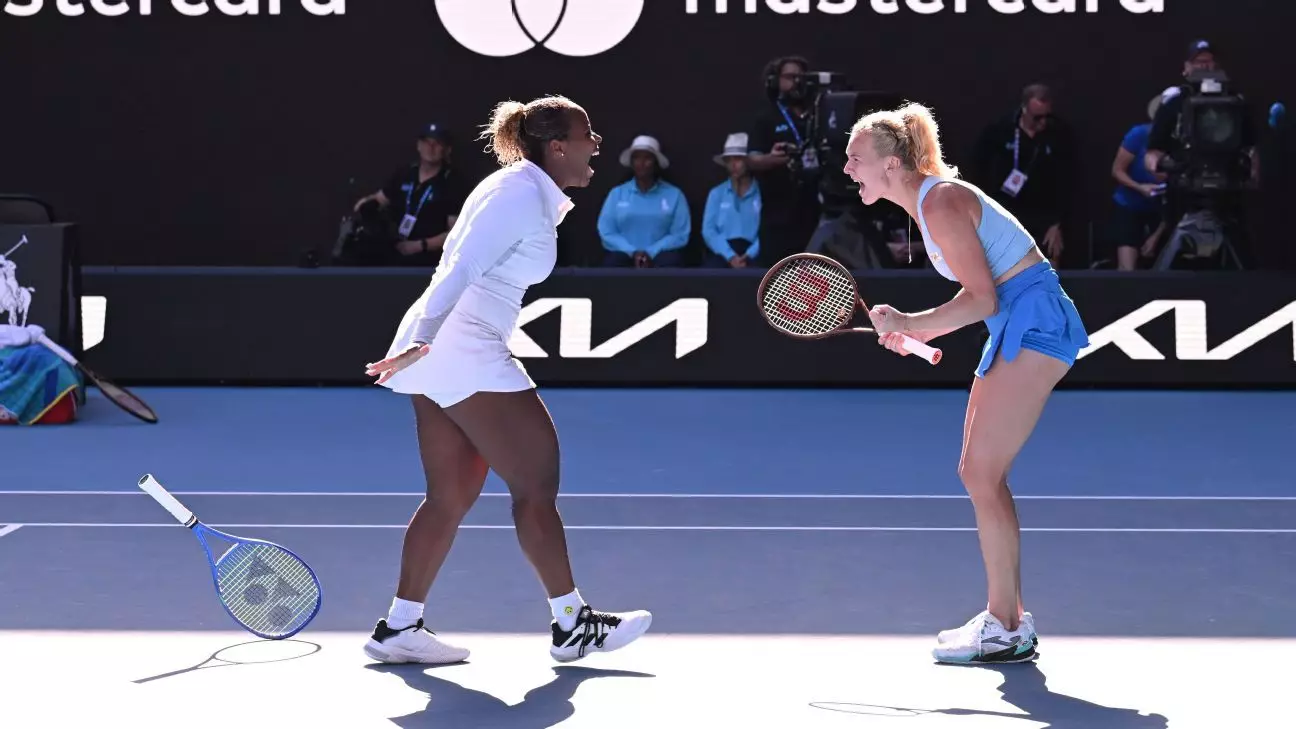In a thrilling match that resonated with nostalgia and determination, American tennis star Taylor Townsend made a remarkable return to the Australian Open, joining forces with Czech Republic’s Katerina Siniakova. They triumphed over the formidable duo of Su-Wei Hsieh and Jelena Ostapenko, securing the women’s doubles title with a scoreline of 6-2, 6-7 (4), 6-3. This victory not only marked a significant achievement in Townsend’s career but also echoed a sense of personal history, as it took place on the court where her journey in professional tennis began.
For Townsend, the Australian Open is not just another tournament; it is a place of cherished memories that significantly shaped her ambition to succeed in tennis. Reflecting on her past, she noted, “This is super special to me. The last time I played on this court I was 15, and in 2012 I won the juniors here.” This heartfelt acknowledgment underlined the emotional weight of the moment, as she celebrated a comeback on a stage that played a pivotal role in launching her career. Winning the junior title had been a catalyst, breathing new life into her aspirations and allowing her to dream of a future filled with success.
As the match unfolded, it became apparent that Townsend and Siniakova were not merely playing for a trophy but also for the memories and dreams that had fueled their choices as athletes. Their chemistry on the court was unmistakable, building on prior successes at Wimbledon and the US Open. The duo’s synergy was crucial in navigating through the pressures of a Grand Slam final.
The final was a testament to the unpredictable nature of sports, showcasing moments of dominance interspersed with dramatic turns. After racing to a confident 6-2, 5-3 lead, Townsend and Siniakova seemed poised to claim the title. However, tandems often shift, and Hsieh and Ostapenko’s resurgence tested the resolve of the top seeds. Just as the match was teetering toward a decisive conclusion, the third seeds mounted an impressive comeback, snatching the second set in a tiebreak.
This sudden change in momentum underscored a fundamental lesson in sports: no lead is insurmountable, and every point counts. It was a pivotal moment, not just for the competitors but for spectators engrossed in the intense exchange of skill and strategy. The tension in the stadium was palpable as both teams vied for control, showcasing not only their technical prowess but also their mental fortitude.
Throughout the match, Townsend and Siniakova demonstrated keen tactical awareness, particularly in exploiting the weak areas of their opponents’ game. They effectively capitalized on Hsieh’s serve, breaking her four times, which proved to be a decisive factor. The pair utilized strategic positioning, particularly at the net, where Townsend’s quick reflexes and Siniakova’s serve-and-volley style created formidable pressure on Hsieh and Ostapenko.
The final set saw a renewed vigor from Townsend and Siniakova as they recalibrated after the setback of losing the second set. Their ability to adapt and refocus highlighted the importance of teamwork and communication within doubles play. Siniakova’s commanding serve to close out the match signified a return to their initial dominance, marking an impressive conclusion to both the match and their partnership in the tournament.
As Townsend and Siniakova celebrated their victory, it was clear that this triumph was merely a chapter in their ongoing story in tennis. For Siniakova, the win guaranteed her a continued reign at the top of the WTA doubles rankings, a feat that reflects her consistent excellence on the court. For Townsend, this victory ignites a renewed sense of purpose as she reestablishes herself among the elite in women’s tennis.
Ultimately, this match was more than just a win; it was a narrative of resurgence, symbolism, and the rekindling of dreams. It showcased the indomitable spirit of athletes driven by passion and history, forever marking the Australian Open as a pivotal moment in their respective careers.

